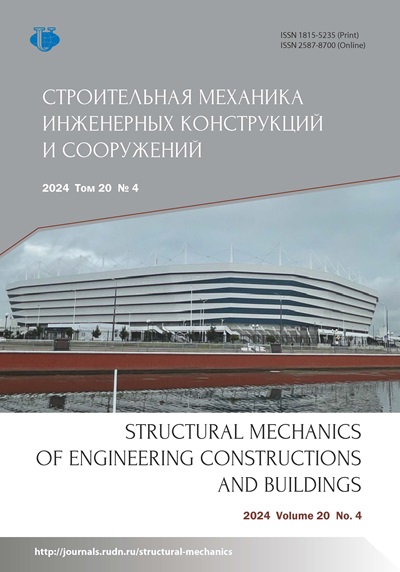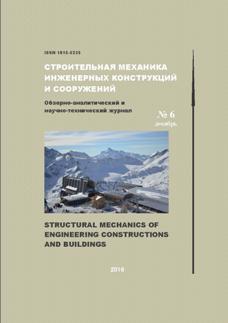MODELING THE HYDRAULIC CALCULATION OF THE CONTROLLING RESERVES IN DRINKING WATER SUPPLY SYSTEMS
- Авторы: BACHAROU T.1, HOUINOU G.1, GBAGUIDI G.A1, AHOUANNOU C.1, KANHO E.1, AZA-GNANDJI R.1
-
Учреждения:
- Выпуск: № 6 (2016)
- Страницы: 63-72
- Раздел: Статьи
- URL: https://journals.rudn.ru/structural-mechanics/article/view/14622
Цитировать
Полный текст
Аннотация
Об авторах
Taofic BACHAROU
Email: btaofic@yahoo.fr
Gossou HOUINOU
Gerard A GBAGUIDI
Clement AHOUANNOU
Ezechias KANHO
Ruben AZA-GNANDJI
Список литературы
- Abdelbaki Cherifa(2014), Modelisation d'un reseau d'AEP et contribution a sa gestion a l'aide d'un SIG, These de Doctorat , p-2.
- Afshar, M. H., Akbari, M., & Marino, M. A. (2005), Simultaneous layout and size optimization of water distribution networks: engineering approach, p 221-230.
- Basile N. (2008), ''Optimization of the design, location and management of water tank in wa- ter distribution systems'', EcolePolytechnique de Montreal.
- Batchbani Essoyeke(2014), Nouvelle approche pour le dimensionnement et l'optimisation de la gestion des reservoirs et de la qualite de l'eau potable dans les reseaux de distribution, Universite de Montreal, Ecole Polytechnique de Montreal, These de doctorat, p 185
- Batchabani E., Fuamba, M. (2014b), Optimal Tank Design in Water Distribution Networks: Review of Literature and Perspectives. Journal of Water Resources Planning and Management, 140(2), 136-145.
- Briere, F. (2007), Drinking-Water Distribution, Sewage, and Rainfall Collection. Montreal, Quebec: Presses inter Polytechnique. 395p.
- Diacu Florin (2000).An Introduction to Differential Equations : Order and chaos, Ed Freeman and company, 399 p
- Marchi, A., Dandy, G., Wilkins, A., Rohrlach, H. (2014), A Methodology for Comparing Evo- lutionary Algorithms for the Optimization of Water Distribution Systems. Journal of Water Resources Planning and Management, 140(1), 22-31.
- Methodologie de calcul des reseaux d'alimentation en eau potable (1981), Institut d'ingenieur de construction de l'inigram, 47p
- Prasad, T. D. (2010), Design of Pumped Water Distribution Networks with Storage. Journal of Water Resources Planning and Management-Asce, 136(1), 129-132. Structural Mechanics of Engineering Constructions and Buildings, 2016, № 6 63
















